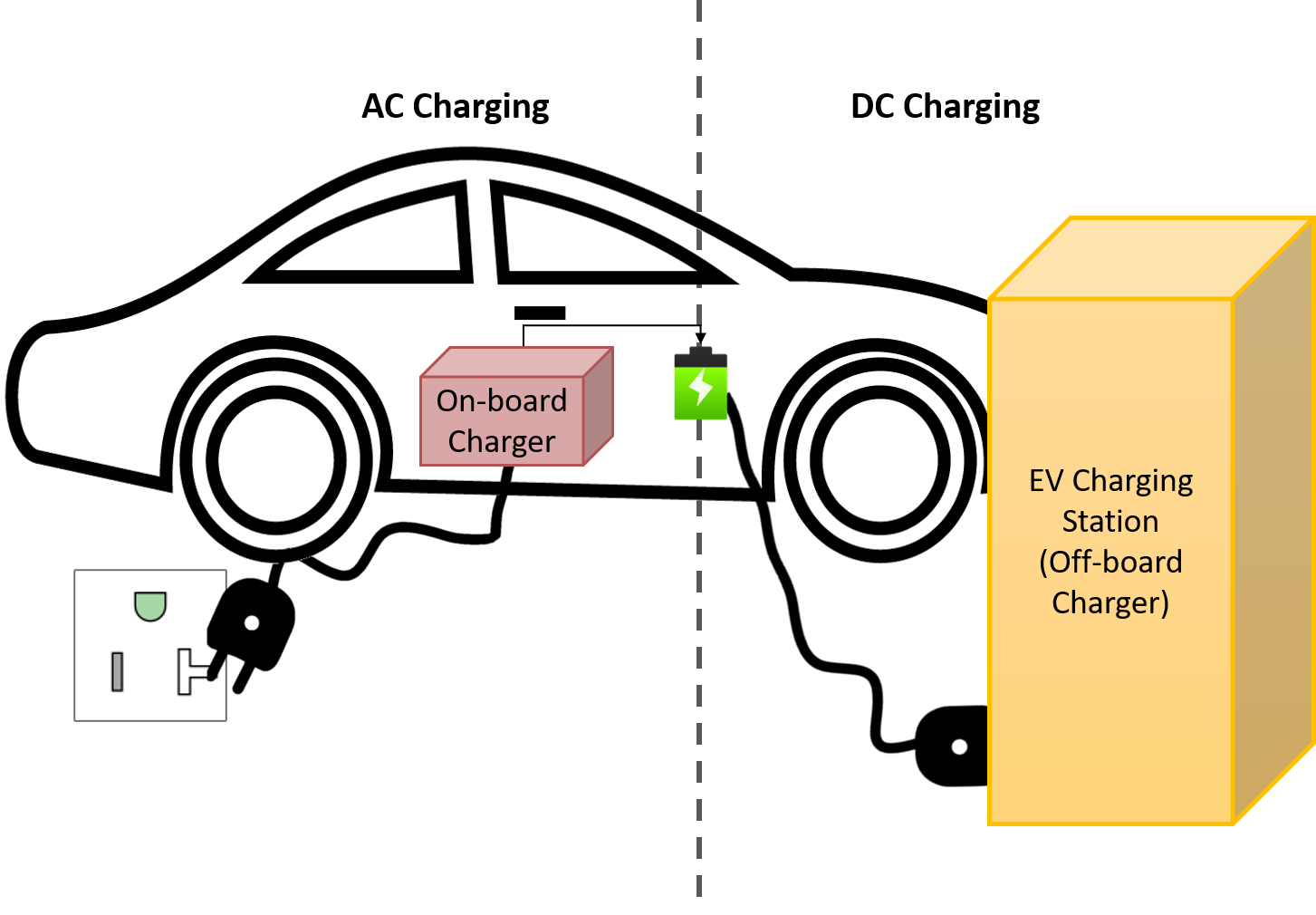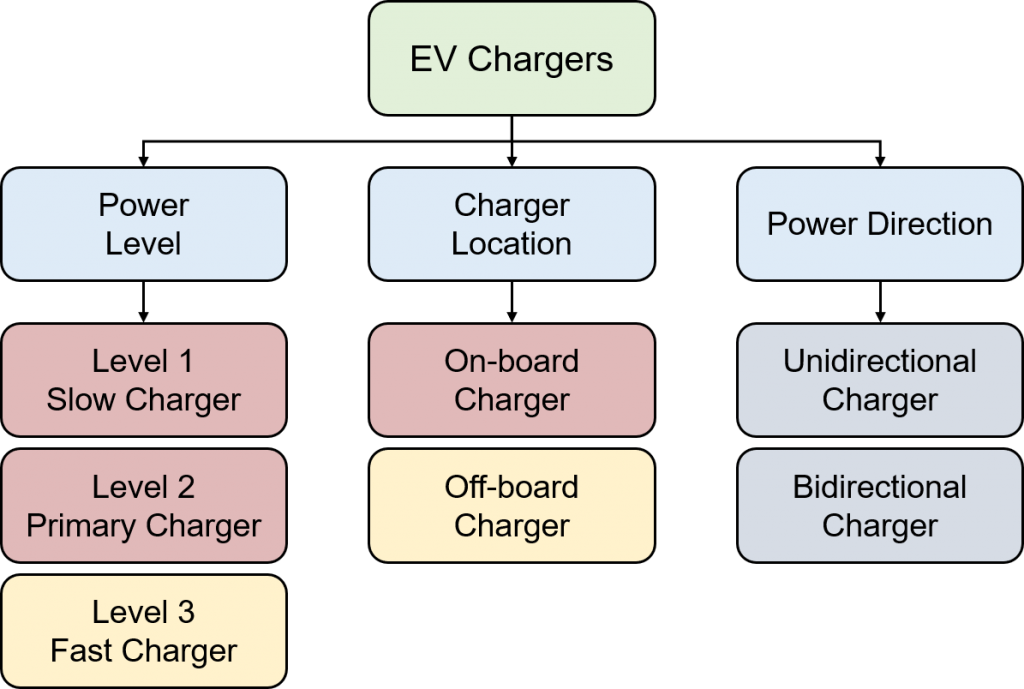The electrification of the transportation sector has been growing rapidly lately due to its significant role in reducing the impact of conventional internal-combustion engine (ICE) vehicles on the environment. Employing EVs results in reduced emissions of greenhouse gases, hence less global warming, climate change, and pollution. We see that the number of EV charging stations worldwide has been increased significantly
EV chargers play a significant role in the development of this industry. EV chargers are classified into different categories, based on their power levels and flow directions, and their locations.
The power levels of EV chargers dictate several aspects, such as the required power, the location of the charger, the charging time, the cost, and the equipment. There are three power levels. Level-1 charging is the slowest and is typically integrated inside the EV (on-board of the vehicle), which imposes restrictions on the weight, space, and cost. The second level, level-2, is the primary method for public or private facilities. Thus, level-2 chargers require specific equipment to be installed. The location of the charger can either be on-board or off-board at this power level. Generally, a charger consists of an AC-DC conversion unit, followed by a DC-DC conversion unit. The on-board charger requires a rectifier circuit inside the EV to convert AC power from the grid to DC. On the other hand, the off-board charger has its conversion units (AC-DC and DC-DC) outside the vehicle, since it supplies the power directly to the EVs battery. Hence, having fewer limits on their size and weight, and it is relatively faster than level-1 charging. Level- 3 is the fastest charging level. Its set up is like a gas station, so the chargers are usually installed in city refueling areas. For off-board chargers, there are EV Supply Equipment (EVSE) that act as stations for EV charging as shown here:

Recent trends include wireless (inductive) charging, where power is transferred magnetically. Many companies started the production of EVs years ago, such as Tesla, Toyota, Kia, Nissan, etc. However, with the new upcoming trends in the automotive industry generally and EV industry specifically, various parameters are being improved and enhanced. These parameters mainly focus on the charging infrastructure of EVs since it has a significant role in the customers’ demands.The third category is the direction of power flow, which can either be unidirectional, i.e., grid-to-vehicle (G2V) only, or bidirectional, i.e., G2V and vehicle to grid (V2G). In other words, unidirectional chargers only deliver power to EVs with no capability of injecting power back to the grid. On the other hand, bidirectional chargers have the advantage of supplying the grid with the unused stored energy, which allows EVs to act as back-up generators.
Go Back to FG4 Main Page


